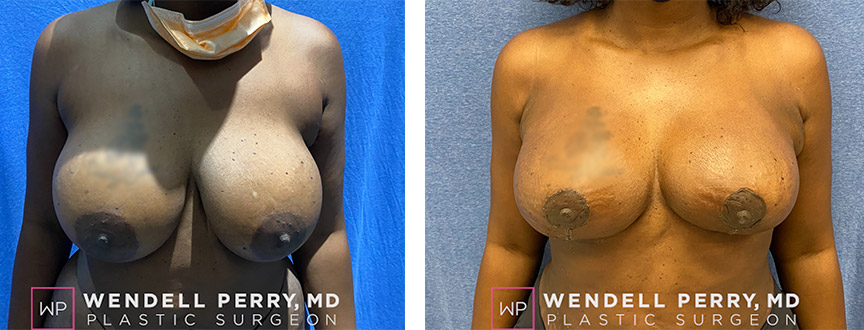Establishing the most confident version of yourself can sometimes mean changing your mind about what previously made you feel beautiful. At Wendell Perry, MD, Plastic Surgeon, we offer breast implant removal procedures to clients who no longer desire the appearance of an enhanced chest or want to replace their implants with newer ones. We are dedicated to helping clients in the Woodbridge and Alexandria, VA, as well as the Rockville, MD, areas discover the most confident versions of themselves yet.
What Is Breast Implant Removal?
Breast implant removal is a cosmetic surgery procedure designed to remove breast implants. This procedure can be done for personal or medical reasons. It involves making an incision to access the implant, removing it, and often removing the surrounding scar tissue as well. Depending on the patient’s goals, breast implant removal may be followed by a breast lift or the insertion of newer breast implants.
Who Is a Candidate for Breast Implant Removal?
The ideal candidate for breast implant removal is someone who no longer wants their breast implants, whether due to dissatisfaction with the appearance, complications such as implant rupture or capsular contracture, or a change in personal preference. Additionally, candidates should be in good overall health and have realistic expectations about the outcome of the procedure. Those considering breast implant removal should discuss their concerns and goals with a board-certified plastic surgeon like Dr. Wendell C. Perry to determine if the procedure is right for them.
Breast Implant Removal Procedure
Each breast implant removal procedure is performed under general anesthesia to ensure your comfort. To begin, your provider will make an incision either around the areola or under the lower fold of your breast. Next, they will carefully remove the breast implant and any scar tissue that may have built up. In the case of implant rupture, your surgeon will remove any silicone gel that has leaked from the implant. If you are having any new implants put in, this is when your provider will place them under the breast tissue or muscles. A breast lift or fat transfer may be needed to compensate for the volume that is removed with the implant. To finish, stitches are used to close any incisions.
Patient Results
Visit GalleryRecovery from Breast Implant Removal
Immediately after breast implant removal surgery, you may experience some mild tenderness, swelling, and bruising that can be managed with prescribed pain medication and cold compresses. For the first one to two weeks after surgery, you will need to avoid any strenuous activity, heavy lifting, and usual activities like driving. It is essential to follow any post-op instructions given to you by Dr. Perry to ensure a positive recovery and desired results.
Breast Implant Removal FAQs
Can breast implants cause pain years later?
Can breast implants last a lifetime?
How common is capsular contracture in breast implants?
How do I prepare for breast implant removal?
How much does it cost to have breast implants removed?
How often should breast implants be checked?
Is removal of breast implants dangerous?
What does capsular contracture look like?
What happens if breast implants are not replaced?
Will capsular contracture go away?
Schedule a Consultation
If you are ready to say goodbye to your breast implants or want to upgrade them to something newer, schedule a consultation with Dr. Wendell Perry, MD, Plastic Surgeon. To get in touch with a member of our team, head to our website and fill out an online contact form today.
 Video
Video Reviews
Reviews Gallery
Gallery










